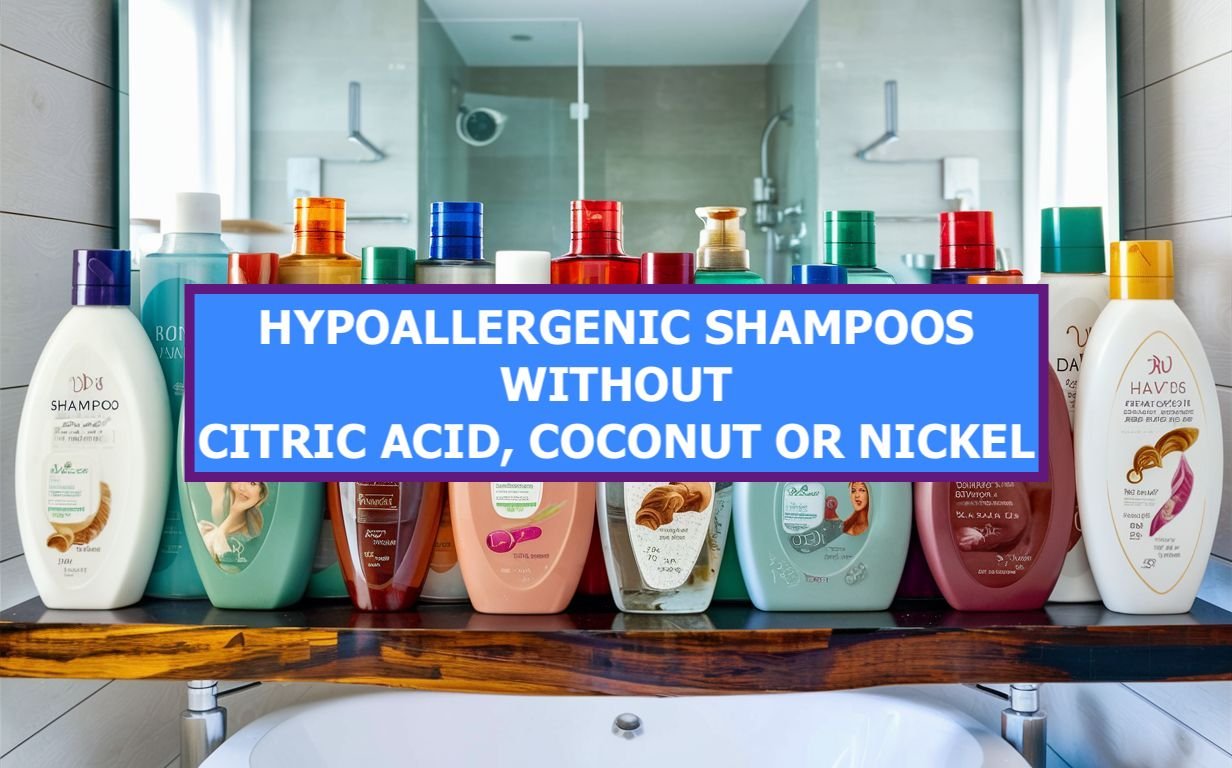In our modern world, the convenience and efficiency brought by certain chemicals have made them ubiquitous in our daily lives. Propane, butane, and isobutane are chemicals widely used for their energy content and properties as propellants and refrigerants. However, alongside their widespread use, there is a growing awareness of the potential sensitivities or allergic reactions these gases can provoke in some individuals. Though not widely recognized in the same vein as traditional allergies, these reactions raise important considerations about our interactions with everyday chemical exposures. This article aims to shed light on how some people may react to sensitivities involving propane allergy, butane allergy, and, of course,se isobutane allergies while exploring their causes, the products that contain them, and strategies for those affected to manage their exposure and find suitable alternatives.

The Nature of Allergies to Propane, Butane, and Isobutane
Understanding Chemical Sensitivities
The term “allergy” is often associated with the body’s immune response to natural substances, like pollen, food, or animal dander. However, some people experience adverse reactions to propane, butane, and isobutane are more accurately described as chemical sensitivities. These sensitivities occur when exposure to certain chemicals triggers a range of symptoms despite the absence of a traditional allergic immune response.
True Allergies vs. Chemical Sensitivities
- True Allergies: Involves the immune system producing antibodies against a specific allergen, leading to symptoms like sneezing, itching, and swelling. Traditional allergies can be diagnosed through tests that measure the presence of these antibodies.
- Chemical Sensitivities: The reactions to these aerosol chemicals do not typically involve an antibody-mediated immune response. Instead, symptoms may result from direct irritation or a non-specific effect on the body’s systems. Because of this, diagnosing sensitivities to these gases relies more on patient history and symptom patterns rather than specific diagnostic tests.
The Role of Exposure
These chemicals are gases at room temperature, making inhalation a primary route of exposure. These gases are used in a variety of applications, from fuel sources in camping equipment and lighters to propellants in aerosol products and refrigerants in cooling systems. The widespread use of these gases increases the likelihood of exposure, making it challenging for sensitive individuals to avoid them entirely.
What Are Aerosols?
Aerosols, a term often associated with spray cans and misters, encompass far more than these common household items. Understanding the nature of aerosols, including their types and sources, is foundational to grasping how they can impact health, particularly for those with sensitivities or allergies.
Definition of Aerosols
Aerosols are tiny particles or droplets suspended in a gas. These minuscule components can be solid or liquid and are small enough to remain airborne for extended periods. Due to their size, aerosols can easily penetrate respiratory pathways and come into contact with skin and eyes, posing potential health risks for sensitive individuals.
Types of Aerosols: Natural vs. Man-Made

- Natural Aerosols: The Earth’s atmosphere contains naturally occurring aerosols, such as sea spray, volcanic ash, and pollen. These substances play significant roles in climate regulation and ecological balance but can also trigger allergic reactions in susceptible individuals.
- Man-Made Aerosols: Human activities contribute a wide array of aerosols to the environment. These include:
- Industrial Emissions: Particulate matter from factories, power plants, and vehicles adds to atmospheric aerosol levels, affecting air quality and health.
- Consumer Products: Aerosolized products, such as spray paints, deodorants, air fresheners, and, notably, dry shampoos, rely on pressurized gases to dispense their contents. These products often contain propellants like propane, butane, and isobutane, along with various chemical additives, fragrances, and allergens.
Household Items containing Butane, Propane, or Isobutane
To effectively manage sensitivities to these aerosol chemicals, it’s essential to understand where these chemicals are commonly found and how exposure occurs. This section breaks down each gas’s primary sources and uses, shedding light on potential exposure routes.
Propane And Propane Allergy
Common Uses:
- Fuel for Heating and Cooking: Propane is widely used in residential and commercial settings for heating, cooking, and hot water. Portable heaters, gas grills, and kitchen stoves often utilize propane.
- Recreational Uses: Camping equipment, such as portable stoves and lanterns, frequently uses propane because of its portability and high energy content.
- Industrial Applications: In industries, propane serves as a fuel for forklifts, farm irrigation engines, and backup generators.
Exposure Routes: The most common propane exposure route is inhalation, especially in environments where propane is used as a fuel source. Leakages in equipment or improper ventilation can increase exposure risk.
Butane And Butane Allergy
Common Uses:
- Lighters and Portable Cooking Devices: Butane is a preferred fuel for refillable and disposable lighters, as well as portable cooking appliances designed for outdoor use.
- Aerosol Propellants: Many aerosol products, including hairsprays, dry shampoos, deodorants, and air fresheners, use butane as a propellant due to its effectiveness and low cost.
- Refrigeration: Although less common than its use as a fuel, butane also serves as a refrigerant in some appliances, leveraging its low boiling point.
Exposure Routes: Similar to propane, inhalation is a significant exposure route for butane, particularly when using products that contain butane as a propellant. Direct skin contact with butane can also occur when refilling lighters or using butane-fueled devices.
Isobutane And Isobutane Allergy
Common Uses:
- Aerosol Propellants: Isobutane is utilized in aerosol products for its efficient propellant qualities, and it is found in a range of personal care products, food sprays, and cleaning agents.
- Refrigerants: Its properties make isobutane a suitable refrigerant in cooling systems, offering an environmentally friendlier alternative to traditional fluorocarbon refrigerants.
- Foam Blowing Agents: Isobutane is used to produce foams for insulation materials, contributing to their energy efficiency.
Exposure Routes: Exposure to isobutane primarily occurs through inhalation from aerosolized products and, to a lesser extent, from leakages in refrigeration systems or during foam insulation manufacturing.

Symptoms and Health Effects
Understanding the potential health effects and symptoms caused by exposure to these aerosol chemicals and gases, including through products like dry shampoos, is critical for individuals with chemical sensitivities. This awareness can guide prompt recognition and appropriate response to exposure.
Immediate and Long-term Symptoms
Exposure to these gases, especially in individuals with sensitivities, can lead to a range of symptoms that vary based on the level and duration of exposure:
- Immediate Symptoms: These can include respiratory irritation, such as coughing and shortness of breath, dizziness, headaches, and in cases of direct skin contact, irritation or rash. Eye irritation and watering are also common due to the volatile nature of these chemicals.
- Long-term Symptoms: Prolonged or repeated exposure, even at low levels, can exacerbate or lead to chronic health issues. This includes persistent respiratory problems, dermatitis, and, in the case of severe exposure, neurological symptoms like prolonged dizziness or coordination difficulties. Individuals with pre-existing conditions like asthma or eczema may experience worsening of their symptoms.
Sensitivities and Allergic Reactions
While not allergic reactions in the traditional sense involving IgE antibodies, sensitivities to aerosol chemicals manifest through the body’s non-specific defense mechanisms. These reactions are more akin to chemical irritations or toxicological responses rather than immunological ones seen in conventional allergies.
Specific Concerns with Dry Shampoo and Aerosol Products
Products like dry shampoos that contain butane and isobutane as propellants pose specific concerns due to their mode of application. Inhalation is a significant risk, as the product is directly sprayed onto the hair and scalp, often in enclosed spaces with limited ventilation. This can lead to higher concentrations of these gases in the user’s immediate breathing zone, increasing the risk of respiratory and eye irritation.
Identifying Symptoms Linked to Exposure
Recognizing symptoms linked to these chemicals involves monitoring one’s health responses following exposure to known sources, such as after using dry shampoo or being in an environment where these gases are present. Key indicators include the onset of respiratory discomfort, skin irritation, neurological symptoms following exposure, and, in some severe cases, brain cell damage.
Mitigation and Response
Upon identifying symptoms associated with exposure to propane, butane, or isobutane:
- Reduce Exposure: Immediately leave or ventilate the area to decrease the gas concentration.
- Seek Medical Attention: For severe or persistent symptoms, especially respiratory distress or signs of anaphylaxis, seeking medical attention is crucial.
- Product Alternatives: Consider switching to products that do not contain these gases, particularly for personal care items like dry shampoos.
Diagnosis and Challenges
Diagnosing sensitivities to propane, butane, and isobutane presents unique challenges due to their widespread use in daily life and their presence in various consumer products, including dry shampoos. Unlike traditional allergies, which can be identified through specific tests for IgE antibodies, chemical sensitivities require a more nuanced approach to diagnosis.
Diagnostic Approaches
- Patient History and Symptom Tracking: A detailed patient history, including exposure events and symptom onset, is crucial. Individuals might be asked to keep a diary of symptoms and potential exposure incidents to help identify patterns or triggers.
- Elimination and Challenge Tests: In some cases, eliminating suspected products or chemicals from one’s environment and then gradually reintroducing them may help determine the cause of symptoms. This method must be conducted under medical supervision to avoid severe reactions.
- Environmental and Occupational Assessments: Evaluating the individual’s living and working environments can identify potential sources of exposure. This may involve checking for propane, butane, and isobutane use in household, leisure, and workplace settings.
Challenges in Diagnosis
- Non-specific Symptoms: The symptoms of chemical sensitivities are often non-specific and can mimic those of other conditions, making it difficult to pinpoint the exact cause. This term is also referred to as Multiple chemical sensitivities.
- Lack of Standardized Testing: No widely accepted tests specifically for sensitivities to these gases complicate the diagnostic process.
- Variable Sensitivity Levels: Individuals may have different sensitivity thresholds, with some reacting to very low levels of exposure, further complicating diagnosis and management.
Moving Forward After Diagnosis
Once a sensitivity to propane, butane, or isobutane is suspected or identified, the focus shifts to managing exposure and symptoms:
- Environmental Control: Implementing strategies to reduce or eliminate exposure in the home and workplace is paramount.
- Medical Management: For symptoms that do arise, medical management may involve the use of over-the-counter or prescription medications to alleviate specific symptoms, such as respiratory discomfort or skin irritation.
Management Strategies
For individuals diagnosed with sensitivities tothese aerosol chemicals, effectively managing exposure is key to minimizing symptoms and maintaining quality of life. This entails adopting a multifaceted strategy encompassing environmental control, lifestyle adjustments, and medical intervention when necessary.
Reducing Exposure in Daily Life
- Product Awareness and Substitution: Identify and replace household and personal care products that contain propane, butane, and isobutane. Opt for alternatives to aerosol products, like dry shampoos, that use these gases as propellants. Non-aerosol versions or natural powders can be effective replacements.
- Home Ventilation: Improve indoor air quality through adequate ventilation, particularly in spaces where gas-powered appliances are used. Regular maintenance of these appliances can also reduce the risk of leaks and exposure.
- Workplace Safety: For those in industries where exposure to these gases is more likely, advocating for proper safety measures, including using certified protective equipment and ensuring well-ventilated spaces, is essential.
Lifestyle Adjustments
- Educating Friends and Family: Share information with close contacts about your sensitivities to ensure they understand your needs, especially regarding product use in shared spaces.
- Planning for Emergencies: Carry medical identification that notes your sensitivity to these chemicals and understand the steps to take if accidental exposure occurs, including the use of emergency medication if prescribed.
Medical Management
- Symptom Relief: Over-the-counter antihistamines can alleviate mild symptoms related to incidental exposure, while prescription medications may be necessary for more severe reactions.
- Consulting Healthcare Providers: Regular check-ups with a healthcare provider knowledgeable about chemical sensitivities can help manage the condition effectively. They can provide guidance on symptom management, safe product use, and emergency preparedness.
Challenges in Management
Managing sensitivities to aerosol chemicals can be challenging due to the ubiquity of these chemicals in modern life. The invisibility of gases and the widespread use of these compounds in consumer products necessitate constant vigilance. Furthermore, the variability in individual sensitivity levels means that what works for one person may not work for another, requiring personalized strategies.
Advocacy and Community Support
- Advocacy for Safer Products: Engaging in or supporting efforts to promote the use of safer alternatives in consumer products can lead to broader changes that benefit those with chemical sensitivities.
- Community Support: Connecting with others who have similar sensitivities through online forums, support groups, or advocacy organizations can provide valuable tips, emotional support, and a sense of community.
Conclusion
Navigating the complexities of sensitivities to aerosol chemicals such as butane, etc, requires vigilance, adaptability, and a proactive approach to health and environmental awareness. By understanding the sources of these chemicals, recognizing the symptoms of exposure, and implementing effective management strategies, individuals can significantly reduce the impact of these sensitivities on their daily lives.
Managing these chemical sensitivities sheds light on the importance of informed choices, especially when shopping for new household products, such as selecting non-aerosol alternatives to dry shampoos commonly containing butane and isobutane. It also highlights the need for enhanced ventilation and safety practices in both the home and workplace to mitigate exposure risks.
In conclusion, while sensitivities to propane, butane, and isobutane present unique challenges, they also offer an opportunity for individuals to engage more deeply with their health and the environment. By fostering awareness, advocating for change, and pursuing healthier lifestyles, those affected can navigate their sensitivities more effectively, leading to improved healthy lifestyles and a better quality of life. The path forward involves not just individual adaptation but collective action towards safer, more sustainable practices that prioritize human health and environmental well-being.
Reference:
https://www.ncbi.nlm.nih.gov/pmc/articles/PMC5787638/
https://www.ncbi.nlm.nih.gov/pmc/articles/PMC8357011/
https://nj.gov/health/eoh/rtkweb/documents/fs/0273.pdf
https://karger.com/dmj/article/4/4/344/823310/Butane-Toxicity-The-Curse-of-Volatile-Solvent


